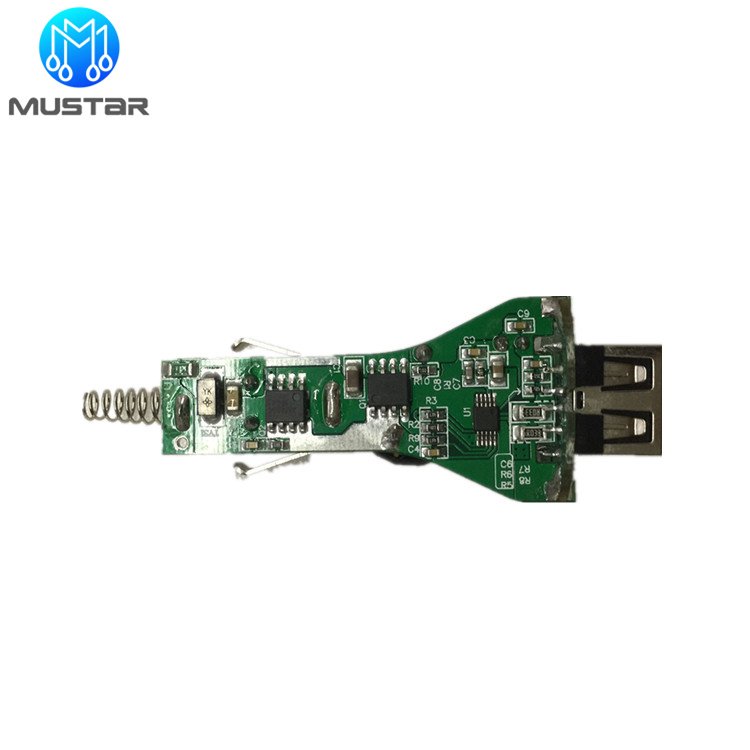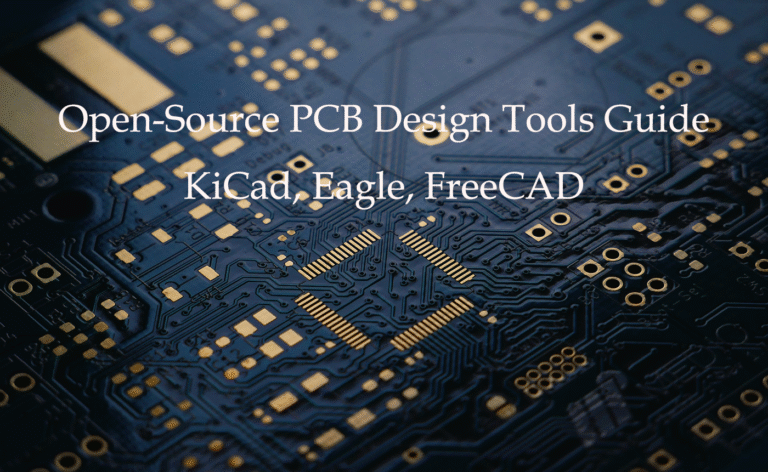Quick Takeaway: The global BMS market is growing from $4.95 billion in 2024 to $6.51 billion by 2032. Meanwhile, customized PCBA solutions are becoming essential for battery safety and performance across industries like electric vehicles and renewable energy storage.
Contents
- What Are BMS PCBA Solutions?
- Market Growth & Industry Statistics
- Key Components in Custom BMS PCBA Design
- Step-by-Step Custom BMS PCBA Development Process
- Industries That Need Custom BMS PCBA Solutions
- Design Challenges & Professional Solutions
- Why Choose Professional BMS PCBA Manufacturing
- Quality Testing & Safety Standards
- Future Trends in BMS PCBA Technology
- Frequently Asked Questions
- Conclusion
What Are BMS PCBA Solutions? (Quick Overview)
A BMS PCBA (Battery Management System Printed Circuit Board Assembly) is essentially the “brain” of any battery pack. Furthermore, this electronic board monitors and controls battery performance to ensure safety, efficiency, and longevity.
Think of it this way: just like your smartphone needs a circuit board to manage its battery, electric vehicles and energy storage systems need customized PCBA solutions for BMS to work properly. Additionally, these boards prevent dangerous situations like overheating or overcharging.
Why does customization matter? Different batteries have different needs. For instance, an electric car battery requires different protection than a home solar battery. Therefore, customized PCBA solutions for BMS ensure optimal performance for each specific application.
“Customization is crucial because it allows the BMS to meet specific battery types, power requirements, safety standards, and environmental conditions.” – IEEE Power Electronics Society
Market Growth & Industry Statistics
The numbers tell an exciting story about customized PCBA solutions for BMS. Moreover, the industry is experiencing unprecedented growth driven by electric vehicles and renewable energy adoption.
According to recent market research, the global BMS market is expanding at a 3.5% CAGR. Similarly, the PCB market is reaching new heights, with projections showing continued growth through 2025 and beyond.
Key growth drivers include:
- Electric Vehicle Adoption: More car manufacturers are switching to electric models
- Renewable Energy Storage: Solar and wind farms need reliable battery management
- Consumer Electronics: Smartphones and laptops demand better battery safety
- Industrial Applications: Factories and equipment require robust power management
China’s dominance in PCB manufacturing continues to strengthen, with the country representing nearly 65% of global production capacity. This positions companies like Mustar at the forefront of BMS PCBA innovation.
Key Components in Custom BMS PCBA Design
Understanding the essential components helps explain why customized PCBA solutions for BMS are so important. Each component plays a specific role in keeping batteries safe and efficient.
Essential BMS PCBA Components:
1. Microcontrollers (MCUs)
These act as the “brain” of the BMS. They process data from sensors and make decisions about charging, discharging, and protection. Additionally, modern MCUs can communicate with other systems wirelessly.
2. Operational Amplifiers (Op-Amps)
Op-amps amplify small voltage signals from battery cells. Since individual cell voltages are often just a few volts, these components ensure accurate monitoring across the entire battery pack.
3. MOSFETs (Metal-Oxide-Semiconductor Field-Effect Transistors)
These electronic switches control current flow in and out of the battery. Furthermore, they can quickly disconnect power during dangerous situations like short circuits.
4. Protection Circuits
These specialized circuits monitor for overvoltage, undervoltage, overcurrent, and overtemperature conditions. Consequently, they trigger protective actions when problems occur.
5. Balancing Modules
Battery cells don’t always charge and discharge equally. Therefore, balancing modules ensure all cells maintain similar voltage levels, which extends battery life significantly.
6. Communication Interfaces
Modern BMS systems need to communicate with vehicle computers, monitoring systems, or mobile apps. Thus, interfaces like CAN bus, RS485, or wireless modules are essential.

The selection and integration of these components require expertise and experience. That’s why working with established manufacturers like Electronics Tutorials recommend is crucial for successful BMS PCBA projects.
Step-by-Step Custom BMS PCBA Development Process
Creating customized PCBA solutions for BMS follows a systematic process. Each step builds upon the previous one to ensure optimal performance and safety.
Define Requirements and Specifications
First, engineers analyze the battery type, voltage range, current capacity, and operating environment. Additionally, they consider safety standards and certification requirements for the target market.
Component Selection and Sourcing
Next, the team selects appropriate components based on the defined requirements. This includes choosing MCUs, MOSFETs, op-amps, and protection circuits. Moreover, reliable sourcing ensures component availability and quality.
PCB Layout Design and Optimization
Then, engineers design the PCB layout for optimal current flow and thermal management. Furthermore, they consider signal integrity, electromagnetic interference (EMI), and manufacturing constraints.
Safety Feature Integration
Subsequently, protection circuits are integrated for overvoltage, undervoltage, overcurrent, and thermal protection. These features are critical for preventing dangerous situations and ensuring user safety.
Prototyping and Initial Testing
After that, prototypes are built and tested under various conditions. This phase identifies potential issues and allows for design refinements before moving to production.
Design Refinement and Validation
Based on test results, engineers make necessary adjustments to improve performance, reliability, and manufacturability. Additionally, they validate the design against all specifications.
Mass Production Preparation
Finally, the design is prepared for mass production. This includes creating manufacturing documentation, setting up quality control procedures, and establishing supply chain processes.
At Mustar, this entire process typically takes 4-8 weeks depending on complexity. With over 25 years of experience, our team streamlines development while maintaining the highest quality standards.
Industries That Need Custom BMS PCBA Solutions
Customized PCBA solutions for BMS serve diverse industries, each with unique requirements and challenges. Understanding these applications helps demonstrate the versatility and importance of BMS technology.
🚗 Electric Vehicles (EVs)
Electric cars, buses, and trucks require sophisticated BMS systems to manage high-voltage battery packs. These systems must handle rapid charging, regenerative braking, and extreme temperature conditions. Additionally, they need to communicate with vehicle control systems for optimal performance.
🔋 Renewable Energy Storage
Solar and wind farms use large battery systems to store energy when production exceeds demand. Therefore, BMS PCBA solutions must manage thousands of battery cells while ensuring long-term reliability and safety. Furthermore, they integrate with grid management systems.
📱 Consumer Electronics
Smartphones, laptops, tablets, and wearable devices all depend on BMS technology. These applications require miniaturized solutions that maximize battery life while preventing overheating. Moreover, they must support fast charging protocols safely.
🏭 Industrial Equipment
Forklifts, automated guided vehicles (AGVs), and backup power systems use industrial-grade BMS solutions. These applications demand robust designs that can withstand harsh environments and provide reliable operation 24/7.
🏠 Smart Grid and Home Storage
Residential battery storage systems help homeowners store solar energy and reduce electricity costs. Consequently, BMS solutions must be user-friendly while providing professional-grade safety and monitoring capabilities.
According to Markets and Markets research, the automotive sector represents the largest share of BMS demand, followed by renewable energy and consumer electronics.
Design Challenges & Professional Solutions
Developing customized PCBA solutions for BMS presents several technical challenges. However, experienced manufacturers have developed proven solutions to address these issues effectively.
Major Design Challenges:
Challenge 1: High Voltage and Current Management
BMS systems often handle voltages exceeding 400V and currents over 200A. This creates significant safety risks and requires careful component selection and PCB layout design. Additionally, proper isolation and protection circuits are essential.
Professional Solution: Experienced manufacturers use high-voltage rated components, implement proper creepage and clearance distances, and employ multiple layers of protection. Furthermore, they conduct extensive testing to verify safety under all operating conditions.
Challenge 2: Thermal Management
High currents generate substantial heat, which can damage components and reduce battery life. Moreover, poor thermal management can lead to thermal runaway – a dangerous condition where batteries overheat uncontrollably.
Professional Solution: Advanced thermal design includes strategic component placement, thermal vias, heat sinks, and sometimes active cooling. Additionally, temperature monitoring throughout the PCB ensures early detection of thermal issues.
Challenge 3: Electromagnetic Interference (EMI)
Switching circuits in BMS systems can generate electromagnetic noise that interferes with other electronic systems. This is particularly problematic in automotive and aerospace applications.
Professional Solution: Proper PCB layout techniques, shielding, filtering, and compliance with EMC standards minimize interference. Furthermore, professional testing validates EMI performance before production.
Challenge 4: Long-term Reliability
BMS systems must operate reliably for 10-15 years or more. Component degradation, environmental stress, and thermal cycling can all impact long-term performance.
Professional Solution: Conservative component derating, environmental testing, and accelerated life testing ensure long-term reliability. Additionally, proper conformal coating and protection methods extend operating life.
“The key to successful BMS PCBA design lies in understanding both the electrical requirements and the environmental challenges. Professional manufacturers bring this expertise to every project.” – Power Electronics Magazine
Why Choose Professional BMS PCBA Manufacturing
Selecting the right manufacturing partner for customized PCBA solutions for BMS can make the difference between project success and costly failures. Professional manufacturers offer numerous advantages over generic PCB assembly services.
Key Advantages of Professional Manufacturing:
Technical Expertise and Experience
Professional BMS PCBA manufacturers have deep knowledge of battery management systems, safety standards, and industry requirements. For instance, Mustar’s 25+ years of experience includes over 500 types of automotive PCBA projects, providing invaluable insight for new developments.
Quality Control and Certifications
Established manufacturers maintain rigorous quality systems including ISO9001, ISO13485 (medical), IATF16949 (automotive), and other industry-specific certifications. These standards ensure consistent quality and regulatory compliance.
Advanced Testing Capabilities
Professional facilities offer comprehensive testing including ICT (In-Circuit Testing), FCT (Functional Circuit Testing), 3D X-Ray inspection, and environmental testing. Consequently, products meet all performance and safety requirements before delivery.
Supply Chain Management
Reliable component sourcing is critical for BMS PCBA projects. Professional manufacturers maintain relationships with over 200 global suppliers and have strategies to manage component shortages and quality issues.
Scalable Production Capacity
From prototype quantities to high-volume production, professional manufacturers can scale production to meet demand. Additionally, they maintain consistent quality across all production volumes.
Mustar’s BMS PCBA Advantages:
- ✅ 25+ years of PCBA manufacturing experience
- ✅ 12,000 square meter facility with 600+ employees
- ✅ 20 SMT lines including 6 dedicated automotive/medical lines
- ✅ Multiple certifications: ISO9001, IATF16949, ISO13485
- ✅ Advanced testing: ICT, FCT, 3D SPI, 3D X-Ray, AOI
- ✅ 200+ global component suppliers
- ✅ Fast prototyping: PCB samples in 4-8 hours
According to industry analysis by Circuits Assembly, companies that partner with experienced BMS manufacturers reduce development time by 40% and improve first-pass yield by 25% compared to generic assembly services.
Quality Testing & Safety Standards
Rigorous testing and adherence to safety standards are non-negotiable for customized PCBA solutions for BMS. The consequences of failures can include fire, explosion, or personal injury, making quality assurance paramount.
Essential Testing Protocols:
In-Circuit Testing (ICT)
ICT verifies that all components are properly installed and functioning. This automated testing can detect shorts, opens, incorrect component values, and assembly defects. Furthermore, it provides 95%+ fault coverage for most BMS PCBAs.
Functional Circuit Testing (FCT)
FCT validates that the BMS performs all intended functions correctly. This includes testing protection circuits, communication interfaces, and measurement accuracy. Additionally, it simulates real-world operating conditions.
3D Solder Paste Inspection (SPI)
Before component placement, 3D SPI verifies solder paste volume, alignment, and shape. This prevents soldering defects that could cause failures in the field. Moreover, it enables real-time process adjustments.
3D X-Ray Inspection
X-ray inspection reveals hidden solder joint defects, especially on components like BGAs that can’t be visually inspected. This is particularly important for BMS applications where reliability is critical.
Automated Optical Inspection (AOI)
AOI systems detect component placement errors, soldering defects, and other visual abnormalities. They provide fast, consistent inspection that catches defects before final testing.
Safety Standards and Certifications:
- IEC 62133: Safety requirements for portable sealed secondary cells
- UN 38.3: Transportation safety for lithium batteries
- UL 2054: Safety standard for household and commercial batteries
- ISO 26262: Functional safety for automotive systems
- IEC 61508: Functional safety for electrical systems
Professional manufacturers like Mustar invest heavily in testing equipment and maintain certifications to these standards. This ensures that customized PCBA solutions for BMS meet all safety and performance requirements.
Future Trends in BMS PCBA Technology
The future of customized PCBA solutions for BMS looks incredibly promising, with several technological trends driving innovation and creating new opportunities.
Key Technology Trends:
Internet of Things (IoT) Integration
Future BMS systems will be fully connected, providing real-time data to cloud-based monitoring systems. This enables predictive maintenance, remote diagnostics, and optimization based on usage patterns. Additionally, IoT connectivity supports over-the-air updates for improved functionality.
Artificial Intelligence and Machine Learning
AI algorithms will analyze battery performance data to optimize charging patterns, predict failures, and extend battery life. Furthermore, machine learning can adapt BMS behavior based on individual usage patterns and environmental conditions.
Advanced Materials and Miniaturization
New PCB materials with better thermal properties and higher frequency performance enable more compact designs. Additionally, advanced packaging technologies like embedded components reduce size while improving reliability.
Wireless Power and Communication
Wireless charging for electric vehicles and wireless communication between BMS components reduce wiring complexity and improve reliability. Moreover, these technologies enable new applications and installation methods.
Enhanced Safety Features
Next-generation BMS systems will include advanced safety features like early thermal runaway detection, automatic fire suppression integration, and enhanced fault isolation capabilities.

According to Nature Energy research, these technological advances will enable battery systems that are 50% smaller, 30% more efficient, and have 2x longer lifespan compared to current solutions.
Frequently Asked Questions
Here are the most common questions about customized PCBA solutions for BMS, along with detailed answers to help you understand this technology better.
Q1: What is a BMS PCBA and why is customization important?
A BMS PCBA (Battery Management System Printed Circuit Board Assembly) is the core electronic board that monitors and controls battery packs, ensuring safety, efficiency, and longevity. Customization is important to meet specific battery types, power requirements, safety standards, and environmental conditions, enabling optimized performance and reliability for different applications such as EVs or renewable energy storage.
Q2: How do you customize a BMS PCB?
Customization involves defining the battery and application requirements, selecting suitable components (MCUs, MOSFETs, op-amps), designing the PCB layout for efficient current flow and heat dissipation, integrating safety features (over-voltage, under-voltage, thermal protection), prototyping, testing, and refining the design before production.
Q3: What are the main challenges in BMS PCBA design?
Challenges include managing high-voltage signals safely, ensuring accurate cell voltage and temperature monitoring, achieving thermal management to prevent overheating, minimizing electromagnetic interference, and providing reliable cell balancing to extend battery life.
Q4: What industries benefit most from customized BMS PCBA solutions?
Electric vehicles, renewable energy storage systems, consumer electronics, industrial equipment, and smart grid applications all benefit from customized BMS PCBA solutions tailored to their specific battery management needs.
Q5: How does the BMS PCBA contribute to battery safety?
The BMS PCBA continuously monitors voltage, current, and temperature of battery cells, activating protection circuits to prevent overcharging, over-discharging, short circuits, and thermal runaway, thus safeguarding both the battery and the device.
Q6: What trends are shaping the future of BMS PCBA manufacturing?
Increasing demand for high-frequency, high-density, and miniaturized PCBAs driven by 5G, AI, IoT, and electric vehicles is pushing innovation in materials, multi-layer PCB designs, heat dissipation techniques, and integration of smart communication protocols.
Conclusion: Your Partner for Advanced BMS PCBA Solutions
The rapidly growing market for customized PCBA solutions for BMS presents tremendous opportunities for businesses across industries. From electric vehicles reaching mainstream adoption to renewable energy storage becoming essential infrastructure, the demand for reliable, safe, and efficient battery management systems continues to accelerate.
Success in this market requires more than just technical knowledge – it demands a manufacturing partner with proven experience, advanced capabilities, and unwavering commitment to quality. The complexity of BMS systems, combined with strict safety requirements and evolving industry standards, makes professional manufacturing partnerships essential for project success.
Key factors for success include:
- Technical expertise in high-voltage, high-current circuit design
- Quality systems that meet automotive, medical, and industrial standards
- Advanced testing capabilities for comprehensive validation
- Reliable supply chain for consistent component availability
- Scalable production from prototype to high volume
🚀 Ready to Develop Your Custom BMS PCBA Solution?
Mustar brings 25+ years of PCBA manufacturing excellence to your BMS project. Our team of experts, state-of-the-art facility, and comprehensive quality systems ensure your customized PCBA solutions for BMS meet the highest standards of performance and reliability.
What you get with Mustar:
- ✅ Free design consultation and feasibility analysis
- ✅ Rapid prototyping with samples in 4-8 hours
- ✅ Complete testing and validation services
- ✅ Scalable production from 1 to 1M+ units
- ✅ Global component sourcing with 200+ suppliers
- ✅ Multiple industry certifications (ISO9001, IATF16949, ISO13485)
- ✅ Dedicated automotive and medical production lines
Don’t let component shortages, quality issues, or design challenges delay your BMS project. Contact Mustar today for a free consultation and discover how our customized PCBA solutions can accelerate your time-to-market while ensuring the highest levels of safety and performance.
📞 Call us: +86 136 8883 2535 |
📧 Email: sales@mustarpcba.com |
🌐 Visit: pcbamustar.com
Join over 100+ automotive electronics companies that trust Mustar for their critical BMS PCBA manufacturing needs.
This article about customized PCBA solutions for BMS was last updated in June 2025. For the most current information about BMS technology trends and Mustar’s capabilities, please visit our website or contact our technical team directly.
Mustar projects:




